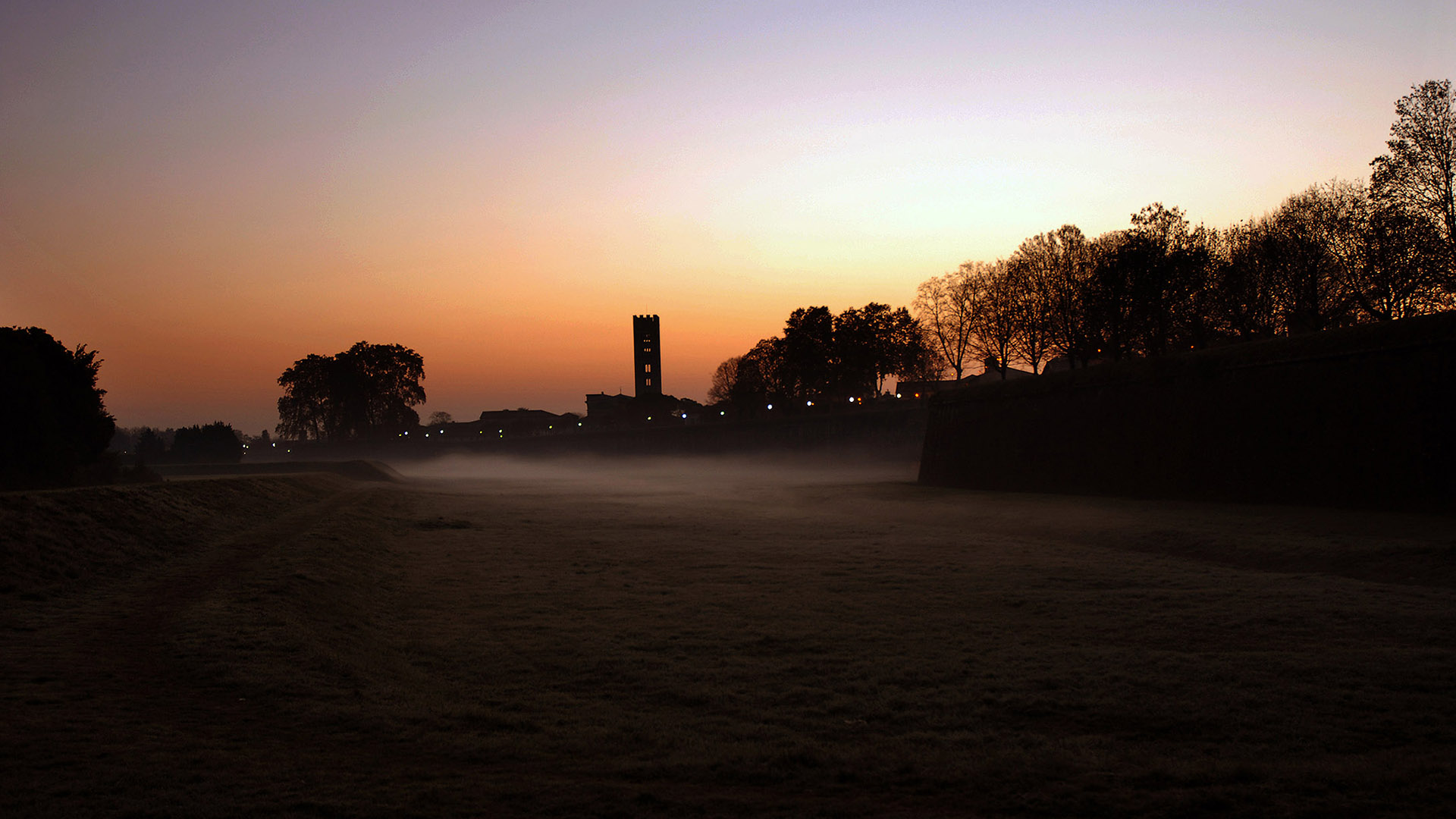
Officially the street is called Via del Fosso, in the singular form, but for all locals in Lucca it is known as "Via dei Fossi" in plural, because after the first part of the street section, interrupted by the widening of the Madonna dello Stellario, a second part continues up to the walls. A third part was covered in 1821, initially called "via dei Fossi Coperti", today Corso Garibaldi, which in early March offers a unique scenery of flowering Japanese magnolias.
Via dei Fossi is definitely one of the most characteristic streets of Lucca. The moat was built in 1376 with the aim of defending the eastern part of the town running along the walls.
Walking along Via dei Fossi allows us to get to know Lucca from many points of view, and, in particular, water is obviously the protagonist.
For centuries this street played a primary role in the town's economy, as the moat water was used as a driving force for several silk laboratories. In the field of silk Lucca boasts, in fact, a record. It was the first place where techniques for large-scale processing with the use of hydraulic energy were developed and implemented.
Because of political disarray in Lucca in the 14th century, many artisans emigrated to the main cities of Northern Italy, such as Venice and Bologna, where they established and developed silk trade, spreading important technological innovations conceived in Via dei Fossi.
Today the street is still characterized by a precise building typology, functional to the activities of silk, with open roof terraces on the upper floor, used as drying racks, with rooms covered by cross vaults on the ground floor that allowed the use of various mechanical devices powered by canal water. Water was therefore an integral part of the production chain, and fabrics were neatly arranged along the walls to dry.
In 1822 the architect Lorenzo Nottolini designed, at the request of the Duchess of Lucca Maria Luisa dei Borbone, a real waterway, to bring "clear and pure waters" from the springs of the hills south of Lucca to the historic center. In Lucca there are two beautiful neoclassical fountains realized by Nottolini, still regularely used by locals.
Walking along Via dei Fossi allows, therefore, to breathe the typical atmosphere of Lucca and to visit some of its most interesting spots.
First of all, the sixteenth-century Villa Bottini-Buonvisi, the only example of a villa in typical local architecture inside the town, with a splendid rectangular garden, a loggia and decorated rooms. In front of the villa there is the small SS. Trinità church, dating back to 1589, with the Madonna del Latte, once a venerated statue realized by Matteo Civitali, while Porta San Gervasio, one of the two access gates of the medieval walls still existing, is just a few meters away. Continuing south, at the end of Via dei Fossi you find the church Chiesa della Rosa dated 1309, a rare example of Gothic style in Lucca.
The blacksmiths' shops, laundries, weavers, tinsmiths, shoemakers are closed now, but the entire eastern part of Lucca, which includes Piazza San Francesco, Via dei Fossi, Via della Zecca, Porta dei Borghi, is having a kind of cultural and commercial revival, as it is less touristic than other areas, thanks to the presence of numerous art studios, painters, sculptures, leather craftsmen, craft breweries and some of the best trattorias in town. Furthermore, there is the Museum of Contemporary Art L.u.C.C.A, set up inside Palazzo Boccella, making this unknown part of Lucca a unique place.
